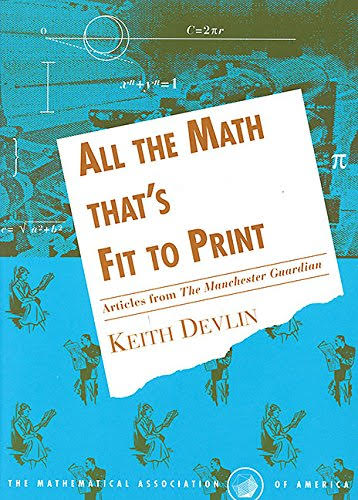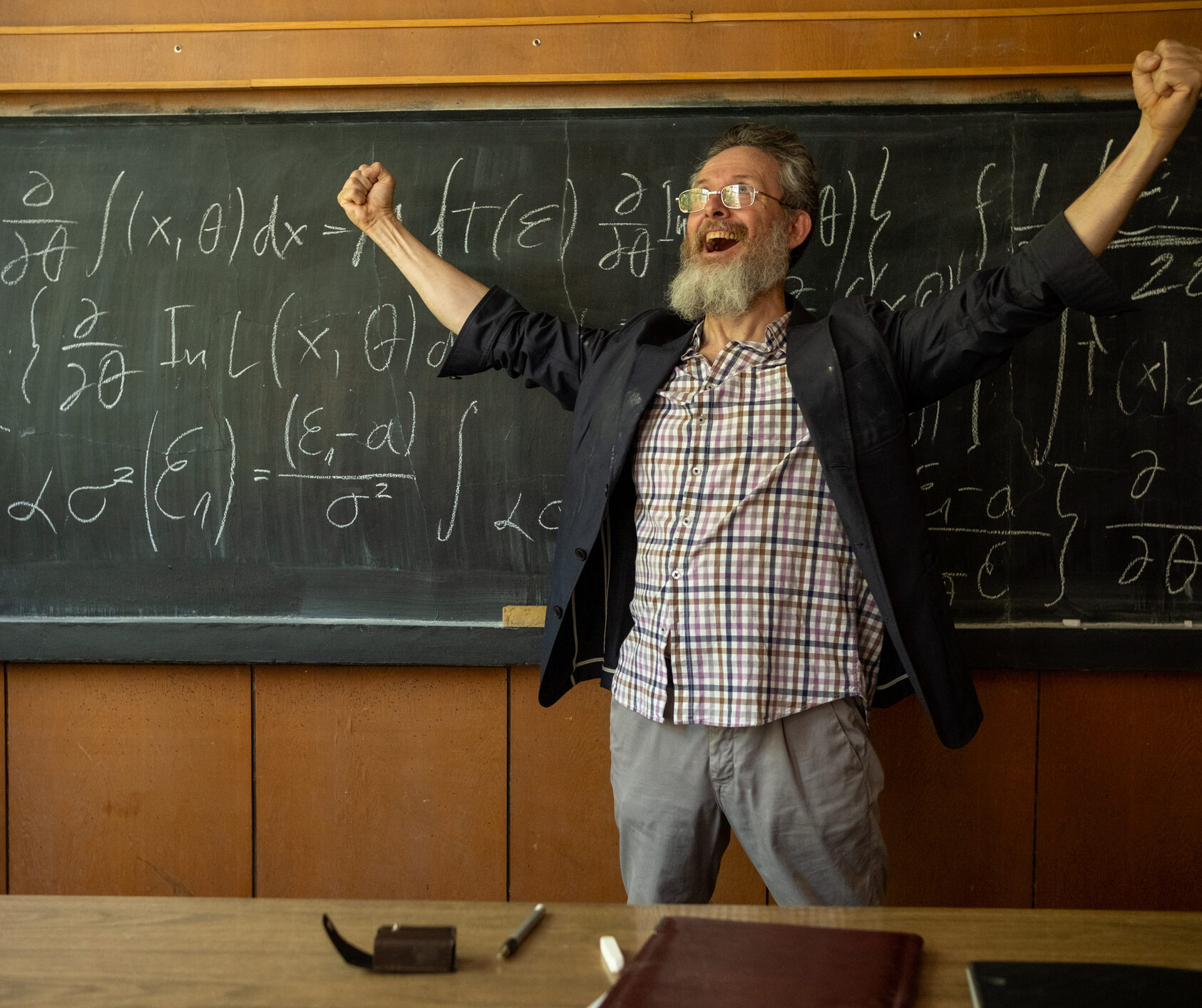By Keith Devlin @KeithDevlin@fediscience.org, @profkeithdevlin.bsky.social
Last year I signed a contract with the AMS to publish an MAA Spectrum book of articles taken from Devlin’s Angle that have relevance to K-12 mathematics education. The book should appear later this year, with the title “A Mathematician’s Angle On School Math – Essays from the First 25 Years of the MAA’s Devlin’s Angle, 1996–2020”.
The title indicates that my decision to produce a bound volume (of material that’s all available on the internet) was to mark a quarter-century MAA anniversary, and to do so in a way that the MAA could make available to K-12 mathematics teachers what might be a useful resource. (Likely relatively few of them peruse the MAA’s website.)
The focus on K-12 education emerged when I sat down to work on an anniversary book. Topics covered in the Angle vary widely, often driven by what’s mathworld news, or math-related world-news, at the time. Posts are not infrequently occasioned simply by something catching my attention one way or another. I began work on the compilation by cataloguing the primary mathematical focus of the 288 posts from 1996 through 2020. They fell fairly easily into five general areas:
- A: 75 posts on K-12 mathematics content and mathematics teaching
- B: 38 posts on college-level mathematics teaching
- C: 65 posts on media, public outreach, and mathematics policy issues
- D: 69 essays on various mathematical topics (not directly teaching related)
- E: 41 posts that did not clearly fit into any of the above categories
The categories overlapped a lot, and many posts could lay claim to one or more other areas; these are newspaper-style “opinion columns”, not research papers. The 46 posts that made it into the final compilation come mainly from Areas A, B, and C. Although my (and the MAA’s) primary focus is collegiate mathematics, K-12 mathematics education turned out to be (marginally) my most common topic. In large part that reflects mass media news coverage of mathematics in general. (See group C.)
Devlin’s Angle was originally established in 1996 (as a regular feature on the then-new MAA website) as a news-based opinion column (the term “blog” came much later). Its forerunner was the regular “editorial” I used to write for the MAA’s print magazine FOCUS, which I edited from September 1991 to December 1997.
For both outlets, I was driven by a passion for “mathematics outreach”. My own education changed my life. Born to working class parents in the North of England shortly after the end of the Second World War, I was part of that “boomer” generation for whom state supplied mass education for all changed our lives in dramatic ways. In my high school years, I was particularly influenced by a small number of “popular mathematics” books, especially those by Lancelot Hogben and WW Sawyer. They ignited my passion for mathematics.
Mathematics has been good to me. My drive to “give back”, and do for others what those pioneering mass-market authors did for me, led to my writing regular articles on mathematics for the UK national newspaper The Guardian in 1983. The MAA published a collection of those articles in a Spectrum book form in 1994, titled All the Math That’s Fit to Print: Articles from the Manchester Guardian. The Guardian articles led other gigs with radio, television, and print media. And I started writing popular mathematics books myself.

Having experienced the power of education in general, and mathematics education in particular, to change lives for the better and improve human life and society, promoting that transformer has always been a driving force for me. Three societal benefits in particular have guided my writing (and related outreach activities): (1) the importance of reaching as diverse an audience as possible; (2) the power of education and mathematics to create equity — to level the playing field, as was the case for me; and (3) the need to be inclusive — to avoid leaving some people behind (as would have happened to me had I been born a generation earlier). Hence mass media. But in following those three beacons of societal hope, I am surely aligned with everyone else for whom education is a vocation. We seek to change lives, and society, for the better.
The role of mathematics in creating the many technologies and the medical care we take for granted provides one glaring example of the extent of the tangible societal benefits that come from our efforts.
What we do as educators, and math educators in particular, also has a massive impact on our nation’s security. The Manhattan Project that ended the carnage of World War II (at a horrific price, to be sure, but with a net saving of further deaths) was one example of the power of mathematics. Another example, this one involving me, was the US’s major initiative to improve defense intelligence analysis in the decade-and-a-half that followed the September 11, 2001 terrorist attack on The World Trade Center and the Pentagon. A nation’s survival can (and frequently does) depend on how well it can make productive use of its best talent, regardless of their origins or demographics. (Just ask the NIH, NASA, the NSF, and the US Armed Forces.)
All of those benefits result from our providing our citizens with an education to make those advances possible, and to do so in a way that reaches everyone and levels the playing field, thereby ensuring that our workforce has the most talent possible, to equal or better our economic (and sometimes potentially military) competitors.
But none of those tangible benefits of mathematics education are what motivate me in my educational outreach efforts. For me, it’s much more basic: I want to give to others what was given to me as a child and young person. As an educator, it’s all about diversity, equity, and inclusiveness. I cannot see it any other way.
In 1987, my passion resulted in my being “recruited” to move to the United States, where I was given significant support and encouragement to pursue my dreams. But today, I find myself living in the wrong country. My three driving goals are, at least on an official level, prohibited.
Fortunately, the bulk of my work and career – the part that required funding and support – are over. I can continue on my own.
Which is what I intend to do. (A co-authored book on algebra and its long history is already at the publisher, a second book on the (non-classified) work I did for the Department of Defense is in early draft form, and a third book focusing on a particular medical application of that DoD-related work is already nearing completion.) [I’ve written about all of those projects in Devlin’s Angle.] So that’s (just some of) the “what”. The only question is “where?”. One of the useful features of being a professional mathematician is, I carry everything I need in my head and my laptop (thank heaven—and not a small amount of math—for a 2Tb harddrive).
Have passion, will travel. (If necessary.)
References
Cover Image: https://www.istockphoto.com/photo/a-teacher-with-a-long-white-beard-big-gray-hair-and-glasses-is-wearing-a-checkered-gm2159025023-579634306?searchscope=image%2Cfilm
